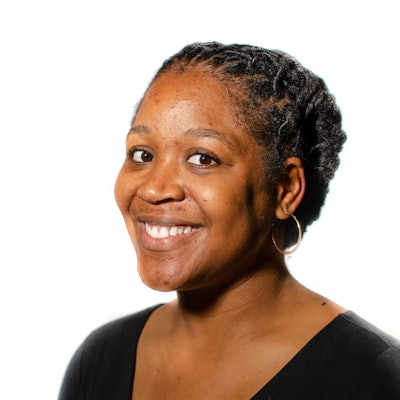Over half of undergraduate students in the U.S. are the first in their family to attend an institution of higher learning. These first-generation students are likelier than their peers to be from minoritized backgrounds, to face economic challenges, and to juggle jobs and families in addition to school. And they may be less familiar with the “hidden curriculum”—the implicit norms and knowledge that help students navigate college life. These factors make it harder for first-gen students to function in institutions that were developed for elite whites. Indeed, six years after entering college, 56% of first-gen students have not earned any post-secondary credential. To help them, colleges are going beyond academic support. They’re re-evaluating physical spaces on campus to figure out how to create an environment of belonging. And campus architecture and design firms are coming up with ways, both subtle and bold, to help first-gen students succeed.
One of most powerful things that universities can do for first-generation students is simple, if not straightforward: designing an on-campus space just for them.
 Dr. Qua’Aisa Williams, associate director for instructional design, First Scholars Initiatives, at the Center for First-generation Student Success
Dr. Qua’Aisa Williams, associate director for instructional design, First Scholars Initiatives, at the Center for First-generation Student Success
Besides letting first-gen students know that they are valued and that there is a place that represents them, campus centers can serve as a place for first-gen students to meet each other and to help each other with the challenges of college life.
“Having a cohort group where they can exchange experiences, get access to resources that can help them, and maintain that sense of sturdy ground as they’re navigating all the different experiences that they haven’t gone through before is really important,” said Rosa Sheng, vice president, higher education studio leader, and director of justice, equity, diversity, and inclusion at SmithGroup, a design firm that works on college campuses.
The location of these centers matters, too. Whether a space for first-gen students is in the center or on the periphery of campus helps determine how many students find it—and sends a message about the university’s priorities.
“We have a first-generation student center on campus. It’s fantastic,” said Christina Michaud, associate director of English Language Learner writing at Boston University (BU). “On the other hand, it’s this basement suite of rooms in the School of Theology, which is kind of random. How much more amazing would this be if instead of being tucked off at the end of this basement corridor, if this was given a nice central location?”
However, BU is an outlier for having a first-gen campus center at all. Williams counted only 25 at the schools that partner with the Center for First-generation Student Success.
First-generation students may feel less comfortable asking questions to get the help they might need on campus. But according to Joel Pettigrew, a business development manager at Shepley Bulfinch, an architecture firm that designs academic spaces, “space and design can link students to those resources.”
Pettigrew advises that schools consider “one-stop shops,” places on campus where students can get answers to almost any question that they might have and connected to the relevant offices if necessary. This eliminates uncertainty and the need to navigate all over campus to find help.
How these spaces are laid out is important.
 Kalyn Pavlinic, a senior interior designer at Shepley Bulfinch
Kalyn Pavlinic, a senior interior designer at Shepley Bulfinch
Instead of the traditional large desk, which represents a barrier, and which may be intimidating, Pavlinic and Pettigrew suggest a coffee table with soft chairs staffed by a student. This creates an environment that feels less hierarchical and transactional and more comfortable and inviting.
Schools can also support first-gen students by prominently locating resources that they are more likely to need. First-gen students may live far from campus and so benefit tremendously from kitchenettes, showers, and laundry facilities, what are typically called “amenities,” but which Sheng refers to as “necessity spaces.”
“Those spaces are historically lacking on campuses because campuses were not designed for this demographic,” said Sheng.
First-gen students are also likelier to have children of their own, so accommodations for families are essential, according to Pavlinic. These could include highchairs in dining facilities, baby-changing stations in all bathrooms, and rooms for mothers to express breast milk. It could also mean quiet spaces where students can relax without their children, labeled in a non-stigmatizing way: “reflection room” is more appealing than “mother’s room” or “meditation room,” which for some can evoke mental health treatment.
Small design choices for major campus facilities like student centers can also help first-gen students feel like they belong. Pavlinic recommended an abundance of display space, which can be used for items that represent different cultures, presentations from student affinity groups, or for students to personalize as they wish.
“Students have to feel that they can see themselves in that space, that their background, history, [and] interests are recognized, are valued,” she said.
One of the most important ways that first-gen students can find connection is through on-campus clubs, so Pavlinic suggested big windows into meeting spaces and event rooms, so that students can see what campus groups are doing without any extra effort.
Even dining halls can create more belonging, Pavlinic said, if eating areas are open to both students on meal plans and to students bringing food from home.
Although architecture and design changes can be expensive, experts agreed that institutions have been increasingly apt to incorporate belonging into their planning processes. Ultimately, as Williams points out, these design choices don’t only benefit first-generation students.
“When campuses make these changes to the physical space, it makes things more accessible for all,” she said.
Jon Edelman can be reached at [email protected].















